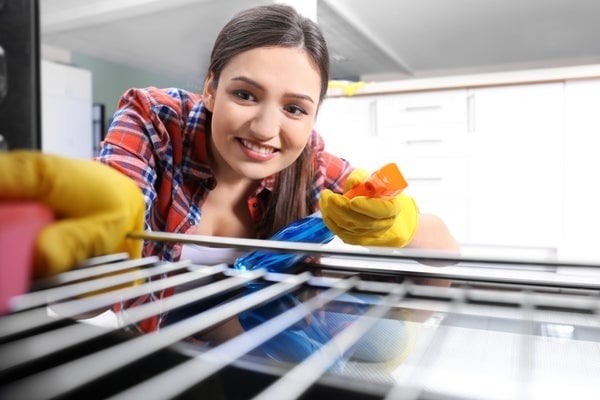Whether your home came with a convection oven or you’re in the market for a new oven, you’ve probably wondered what the big “convection” deal is, right? Maybe more importantly, what is a convection oven and how do you use it? Here are some tips on how to cook with a convection oven, as well as an overview of why this type of oven takes the cake (pun intended) when it comes to heating food evenly.
Related: How Does a Self-Cleaning Oven Work?
What is a convection oven?
An oven is an oven is an oven. Or is it? Sure, you're familiar with the fact that ovens heat and cook food. You even know that the heating elements can be gas-powered or electric. But what makes a convection oven different from those other conventional ovens? It all boils down to one thing: A convection oven is a traditional oven that is equipped with an additional heating element and a fan, which makes it stand out from the competition when it comes to the way the food is cooked.
How does a convection oven work?
You know how it feels cooler outside on a windy day than it does on a windless day of the same temperature? That’s because heat transference naturally occurs when air of two different temperatures converge. However, when moving air is added to the mix, that rate of transference is sped up — in this case, you get colder faster with the cool air blowing on you. What does that have to do with convection ovens, you ask? Everything. In fact, its creators used this “wind chill” phenomenon to their advantage. Instead of merely equipping the oven with two heating elements (one on top and one on the bottom), like conventional ovens, they added a third element: that additional heating source with a fan mentioned above. When the hot air from the heating elements is blown around the oven by the fan, the food cooks more quickly and evenly, making the convection oven a hot-ticket item in the cooking world.
How do you know when to use the convection oven setting?
Do you prefer flaky pastry crusts and perfectly roasted meats and vegetables? Being able to evenly cook a large batch of cookies at one time, utilizing all the oven racks? Then there’s no doubt you should use your convection oven setting when making items like these. Because of its efficient cooking abilities, butter releases steam quickly, creating flaky layers, and the skin on meat renders its fat and browns quicker, making the meat all-around juicer (to name a few examples). You shouldn’t use the convection setting, however, when you’re baking “delicate” foods, such as custards, soufflés or cakes with thin batter, as the blowing air can make the batter move around, creating lopsided results.



